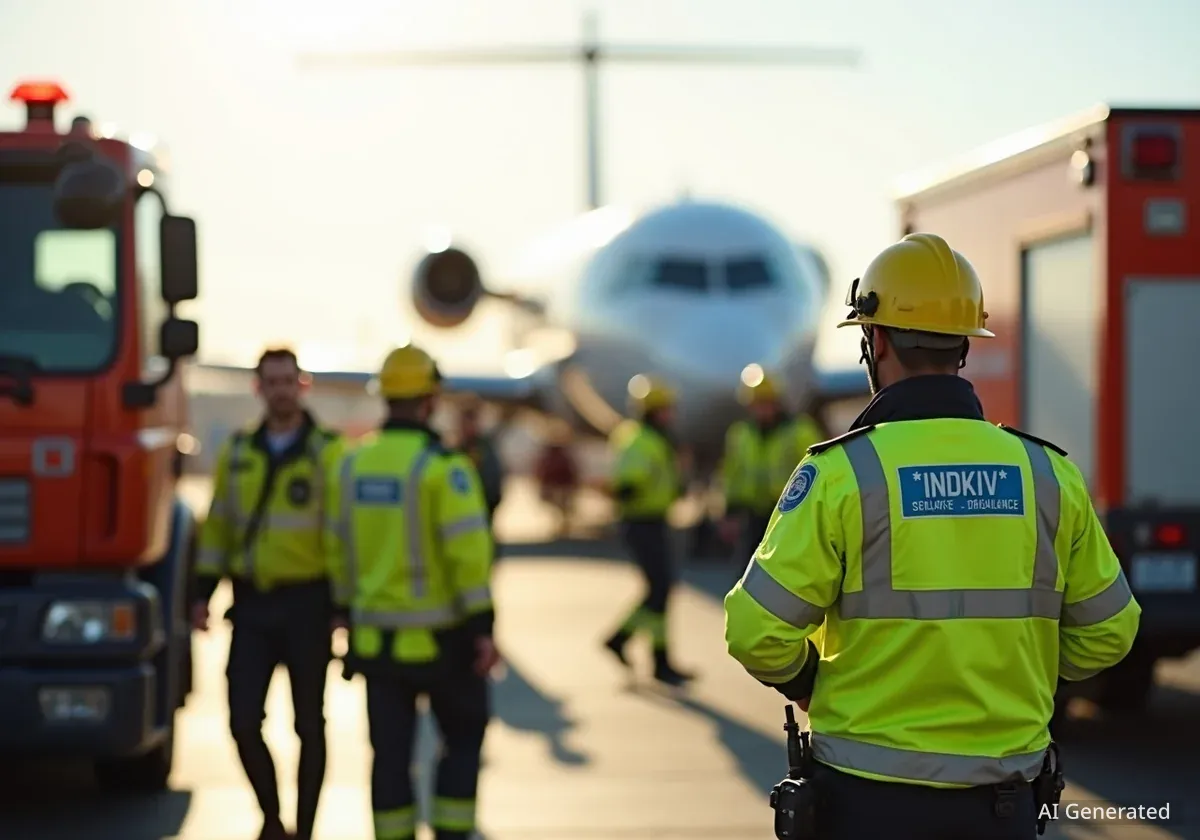A ground stop that affected flights arriving at Houston's Bush Intercontinental Airport (IAH) has concluded. The Federal Aviation Administration (FAA) issued the stop due to ongoing runway construction. This disruption, which began Thursday afternoon, was lifted earlier than its scheduled end time of 5:15 p.m. CDT, allowing normal flight operations to resume.
Key Takeaways
- Bush Intercontinental Airport experienced a ground stop.
- The Federal Aviation Administration (FAA) issued the directive.
- Runway construction was the cause of the stoppage.
- The ground stop was lifted ahead of its anticipated end time.
- Normal flight operations have now resumed at IAH.
Ground Stop Details and Impact
The Federal Aviation Administration confirmed that the ground stop for inbound flights to Bush Intercontinental Airport (IAH) was put in place on Thursday afternoon. This measure is standard practice when specific conditions make landing unsafe or impractical, such as active construction on critical runways. The primary goal of such a directive is to ensure the safety of both passengers and flight crews.
While the exact number of flights affected was not immediately released, ground stops typically lead to delays and cancellations across various airlines. Passengers are always advised to check their flight status directly with their airline or through the airport's official channels for the most current information. The unexpected nature of these events can cause significant travel disruptions, even for short durations.
Airport Fact
Bush Intercontinental Airport (IAH) is one of the busiest airports in Texas and serves as a major hub for both domestic and international travel, handling millions of passengers annually.
Reason for the Air Traffic Halt
The FAA explicitly stated that the ground stop was a direct result of ongoing runway construction at IAH. Airports frequently undertake maintenance and expansion projects to upgrade infrastructure and improve operational efficiency. These projects, while necessary, can sometimes necessitate temporary adjustments to air traffic control procedures.
Construction work on runways often involves heavy machinery and personnel operating in areas that are usually clear for aircraft movement. To prevent any potential hazards, air traffic controllers may halt incoming flights. This ensures that the construction zone is clear and that no aircraft attempts to land or take off during critical phases of the work.
"Safety is our top priority," an FAA spokesperson might state in such situations. "Ground stops are implemented to mitigate any risks associated with operational changes, including construction near active runways."
Timely Resolution
The ground stop was initially projected to remain in effect until 5:15 p.m. CDT. However, the FAA announced that the restrictions were lifted earlier than expected. This early resolution suggests that the construction-related issue was resolved, or the necessary safety protocols were re-established ahead of schedule. An early lift minimizes the overall impact on air travel schedules.
For travelers, an early resolution means that potential delays are shortened, and the ripple effect on connecting flights is reduced. Airport and airline staff work quickly to re-sequence flights and manage passenger flow once a ground stop is lifted. This coordinated effort helps to restore normal operations as efficiently as possible.
Understanding Ground Stops
A ground stop is an air traffic control measure that prevents aircraft from departing from airports that would typically fly into a specific affected airport. It is different from a ground delay, which holds aircraft at their departure airport for a specified period due to expected congestion at the destination. Ground stops are often used for severe weather, security incidents, or critical operational issues like runway closures.
Checking Flight Status
Travelers with flights scheduled to or from Bush Intercontinental Airport are always encouraged to verify their flight status. This can be done through several channels:
- Airline Websites: Most airlines provide real-time updates on their official websites.
- Airport Websites: Bush Intercontinental Airport's official website offers a flight tracker.
- Flight Tracking Apps: Third-party applications also provide up-to-the-minute information.
- Direct Notifications: Many airlines offer text or email alerts for flight changes.
Staying informed is crucial during travel disruptions. Passengers should also consider signing up for airline notifications to receive immediate updates regarding any changes to their itinerary.
Broader Implications for Air Travel
Incidents like ground stops highlight the complex nature of modern air travel. Airports are continuously balancing the need for operational efficiency with safety requirements and infrastructure development. Runway construction, while a planned activity, can still lead to unforeseen short-term impacts on air traffic flow.
These events also underscore the importance of robust communication systems between air traffic control, airlines, and airports. Effective coordination ensures that information is disseminated quickly and that responsive measures are taken to mitigate inconveniences for travelers.
As air travel continues to grow, airports like IAH will likely see more infrastructure projects. These projects are essential for accommodating increasing passenger volumes and larger aircraft. Each project requires careful planning to minimize disruption, but some level of temporary impact is often unavoidable.
Future Travel Considerations
For frequent flyers, understanding how ground stops and other air traffic control measures work can help in planning travel. Building in extra time for connections, especially during peak travel seasons or when major airport construction is known, can reduce stress. Flexibility in travel plans, when possible, is also a valuable asset.
The swift lifting of the ground stop at IAH demonstrates the efficiency of air traffic management and airport operations in responding to and resolving temporary challenges. This allows the vast majority of travelers to continue their journeys with minimal long-term impact from such events.





